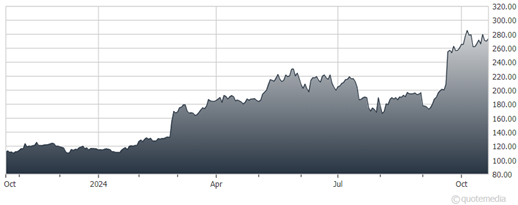The most advanced AI models today need to be contained inside a single building, where tens (and soon hundreds) of thousands of AI processors, such as Nvidia Corp.’s (NVDA) H100s or Blackwell GPUs, can be connected so they can act as one computer. As the AI arms race continues, insane power demands are now unfolding, observes Louis Navellier, founder and chairman of Navellier & Associates.
As Microsoft Corp. (MSFT) and its cloud computing competitors strive to build the world’s most powerful AI models, several factors, including limited energy grids, will create a cap on the size of a single data center. They are anticipated to consume multiple gigawatts of power, or the equivalent of enough energy to serve the electric needs of hundreds of thousands of homes.
(Editor’s Note: Louis Navellier is speaking at the 2024 MoneyShow Masters Symposium Sarasota, which runs Dec. 5-7. Click HERE to register)
Microsoft Azure Chief Technology Officer Mark Russinovich said data centers that make generative AI products like ChatGPT possible will soon reach their size limits, effectively necessitating a new method of connecting multiple data centers together for future generations of their AI technology.
Constellation Energy Corp. (CEG)
No wonder Microsoft got Constellation Energy Corp. (CEG) to reactivate a nuclear reactor on Three Mile Island! It appears the US electricity grid will have to double, and big natural gas electric plants with turbines the size of trains will have to be permitted, if hydroelectric and nuclear power cannot meet the needs of the cloud computing industry.
Meanwhile, the energy markets remain on edge due to the likelihood of war escalation in the Middle East. Last Thursday, the Energy Information Administration (EIA) announced that our crude oil in the Strategic Petroleum Reserve fell by another 2.2 million barrels to 420.5 million barrels in the latest week.
The EIA also reported that US crude oil production rose by 100,000 barrels a day to a record 13.5 million barrels a day in the latest week. Both gasoline and distillate inventories declined in the latest week, which may be due to Hurricane Milton, since consumers tend to hoard fuel before a hurricane.










